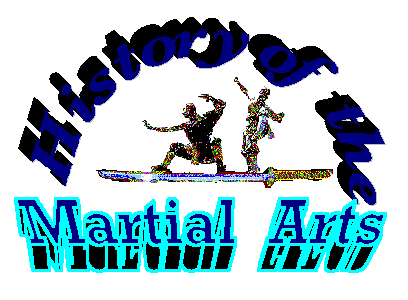

of the
MARTIAL ARTS
By
Donald M. Husband Jr.
Copyright 1996
All rights resevered.
Do not reproduce publically without authors consent.
| Year | Place | Historical Note |
|---|---|---|
| 552-710 | Japan | The Asuka Period: Buddhism introduced during this time period. |
| 552 | Korea | Buddhism was introduce to the kingdom of Paekche. |
| 594 | Korea | Prince Shotoku of Paekche proclaimed Buddhism the religion of the state. |
| 604 | Japan | The Chinese calendar was adopted. |
| 663 | Korea | Paekche was destroyed by the Chinese loosening the grip of Japan from the mainland, who was Korea's Ally. |
| 710-794 | Japan | The Nara Period: During this period the Japanese people take up a primitive use of the sword. |
| 794-1185 | Japan | The Heian Period: This time period the emperor ruled like a god. Political classes were being implemented. Sumo wrestling and Daito-ryu jujitsu (which heavily influenced Aikido) were developed. |
| 1185-1333 | Japan | The Kamakura Period: The Chinese invade and introduce Zen Buddhism to Japan. |
| 1279-1368 | China | Yuan Dynasty |
| 1300-1333 | Japan | Modern Iado, kenjutsu, were being developed by Shigenobu Hayashizaki in a school format. |
| 1300 | China | Empty hand styles were being codified into five animal classifications. Some of these would later be introduced t Japan as Karate. |
| 1300 | Japan | The Samurai caste came into existence on the northside of Mt. Fuji. |
| 1333-1568 | Japan | The Muromachi Period |
| 1336 | Japan | The Emperor Go-Daigo was forced to flee the throne and a rival emperor sat in Kyoto. Feudalism arrived. |
| 1350 | Okinawa | Okinawa in trading with China, Korea and Japan introduces foreign fighting systems to the Ryu-Kyus (Okinawa Isles). |
| 1368-1644 | China | Ming Dynasty |
| 1372 | Japan | Takenouchi took sumai and kumiuchi tactics combining them to make a new fighting system of jujutsu. |
| 1372 | Okinawa | King Satto allies himself to the Chinese Ming Emperor. Securing the tie which would eventually bring Chinese Boxing to the Island. |
| 1470 | Okinawa | King Hashi unites all of Okinawa and bans all weapons. |
| 1543 | Japan | Portuguese traders land in Japan spreading Christianity, and the use of their guns. |
| 1568-1600 | Japan | The Momoyama Period: Though guns have come to Japan, swordsmanship reigns supreme. Famous Duelists came to light such as Musashi Miyamoto, Gonosuke Muso, and Tsunenaga Gasekura. |
| 1582 | Japan | Hideyoshi Toyotomi succeeded Nobunaga Oda bringing relative peace and unifying Japan. |
| 1600-1853 | Japan | The Edo (Tokugawa) Period: shogunate Era which divided once again the classes in japan. |
| 1600 | Japan | Ieyasu Tokugawa seizes control of Japan as Shogun. |
| 1600 | Japan | Will Adams and English seaman arrive in the "Japans" on board a Dutch trading ship. Ieyasu makes Adams a samurai and improves his navy. |
| 1609 | Japan | The Satsuma clan fails to unseat the Shogun. The clan is given Okinawa to oversee to relieve the Satsuma warriors of their frustration. |
| 1609 | Okinawa | With the invasion of the Satsuma clan of Japan, weapons are outlawed throughout the islands. To-de (Chinese Hands) was taken underground and split into three distinct groups, Naha, Shuri, and Tomari, although not true styles (or ryu) each had its own system of self defense. |
| 1624 | Japan | Spaniards were expelled from Japan for fear of military uprising. |
| 1636 | Japan | The people of Japan were forbidden to travel abroad. |
| 1644-1912 | China | Ching Dynasty |
| 1648 | China | Practitioners of Chuan fa retreat to the temples in south China to avoid the Manchu. |
| 1648 | Japan | Chen Yuan-ping (Chin Gempin in Japanese) fled his homeland of China to avoid the Manchus and became a naturalized Japanese. |
| 1750 | Japan | Chut Nakanishi invents the fencing glove and redesigns the shinai (bamboo sword) developed by his teacher Jirouemon Ono. Nakanishi also invents the body armor (dohontai) paving the way for Kendo. |
| 1804 | Japan | Russian envoy, Rezanove, arrives in Japan, initiating modern contact with west. |
| 1853-1868 | Japan | The Transition Period: During this period the Shogun is forced to resign his office and the emperor is the established leader. Major earthquakes rock Japan further enhancing trade among the Westerners. |
| 1853 | Japan | Commodore Matthew C. Perry arrives opening up more trade with Japan. |
| 1868-1912 | Japan | The Meiji Period: The end of Feudalism and the origin of modern Budo. |
| 1868 | Okinawa | Gichin Funakoshi is born to Gisu Funakoshi. |
| 1877 | Okinawa | The Satsuma clan rebels against the Meiji Government that it had helped found. |
| 1882 | Japan | Jiro Kano at age 22 founds his own system of jujitsu called Kodendan Ju(do). He emphasized his art as a do or a way of life, with many ideas, philosophies, and ethics, as well as a pseudo-sport and physical activity in peace time. |
| 1883 | Japan | Morihie Uyeshiba was born in Tanabe. |
| 1888 | Okinawa | Gichin Funakoshi becomes a school teacher in the province of Shuri. |
| 1894 | Japan & Korea | Sino-Japanese war over Korea begins. |
| 1895 | Japan | Dai Nippon Butokukai founded in Kyoto, Japan. |
| 1902 | Okinawa | Karate becomes accessible to populous upon a recommendation from Doctors. Gichin Funakoshi begins giving demonstrations. |
| 1903 | Okinawa | Gichin Funakoshi introduces Karate to Shuri School Districts. |
| 1904 | Japan | Japan goes to war with Russia. Russians were defeated, but Japan was economically drained. |
| 1906 | Okinawa | Gichin Funakoshi and students begin giving first public demonstrations of Karate throughout Okinawa. |
| 1906 | Korea | Duk Ki Song at the age of thirteen begins to learn Tae Kyon from Hue Lim. |
| 1909 | Korea | Japan annexes Korea. Korean's are banned from being able to practice fighting arts. |
| 1911 | Japan | All middle school children are required to take either Kendo or Judo. |
| 1912 | Okinawa | Funakoshi introduces karate to Japanese Imperial Navy, First Fleet. |
| 1914 | Okinawa | G. Funakoshi organizes hundreds of karate demonstrations all over Okinawa supported by all the Okinawa karate masters. |
| 1917 | Okinawa | Funakoshi gives Karate demonstration in Kyoto, Japan. |
| 1922 | Japan | G. Funakoshi arrives from Okinawa to demonstrate Karate-do before the Emperor in Tokyo. He showed that this was a shugyo"an austere discipline" for life, as his instructors had intended and not just a fighting art. Jiro Kano ask Funakoshi to teach him some Karate and Kata. |
| 1923 | Japan | Gichin Funakoshi's first Dojo is destroyed by an earthquake, in which many of his students die. |
| 1924 | Japan | First collegiate karate club developed by Funakoshi at Keio University. |
| 1926 | Japan | G. Funakoshi publishes Rentan Goshin Karate-jutsu, his first book about karate. |
| 1928 | Japan | Karate Clubs organized at all major college campuses. |
| 1930's | Korea | Hong Hi Choi "father of Tae Kwondo" begins his martial art training under Han Il Dong, who was trained under Duk Ki Song. |
| 1933 | Hawaii | First Caucasian taught Karate openly, it was mostly a group of Methodist church men impressed with the aspects of Karate. |
| 1936 | Korea | Hwang Kee masters Tae Kyon and Soo Bak Do at the age of twenty-two, travels to north China to study the "T'ang Method" of Kung Fu. |
| 1937 | Japan | Hong Hi Choi begins training in Kyoto under Shotokan instructor Mr. Kim. |
| 1939 | Japan | Funakoshi changes the Chinese character used in karate (kara) to the Japanese character of kara. |
| 1939 | Japan | Hong Hi Choi recieves his 1st Dan in Shotokan after two years of intensive training. |
| 1940 | USA | Lee Jun Fan also named Bruce Lee was born in San Fransisco and family returns to Hong Kong shortly afterwards. |
| 1943 | Korea | Karate and Kung-fu were officially introduced. |
| 1944 | Korea | After learning Tae Kyon and Sabak from his neighbors and Shotokan karate from G. Funakoshi in his college years, Byung Jick Ro, opens first dojang in Kae-Sung and Kwan Duk Gung (archery school), which lasted three months due to limited enrollment. He called his style Soong Moo Kwan. |
| 1945 | Korea | After Korea's liberation Tae Kyon an Sabak resurfaced. Hwang Kee combines his martial knowlege into Tang Soo Do. Many other martial arts begins to come to light. Yun Moo Kwan founded by Sup Chun Sang. |
| 1945 | Korea | The Chung Do Kwan school the first to have a school and openly teach a empty hand martial. It was founded by Won Kook Lee. |
| 1946 | Korea | Byung Ro opens second dojang in Kae Sung. this attempt was unsuccessfull due to the onset of the Korean War. |
| 1946 | Korea | Yun Pyung (aka In Yoon Byung) establishes Chang Moo Kwan at a YMCA. chi Do Kwan is founded by Yon Kue Pyang. |
| 1949 | Korea | Hong Hi Choi visits Ft Riley Ground General Scholl in Kansas and gave a public demonstration on Korean Karate. |
| 1949-1951 | Japan | Karate is introduced on American Air Bases. Japan Karate Assosication (JKA) organized, G. Funakoshi, Chief Instructor, N. Nakayama, Asst. Instructor. |
| 1952 | Korea | President Syngman Rhee orders all soldiers to receive training in the art of Korean Karate. |
| 1953 | Korea | Byung Ro opens third dojang in Seoul Korea following the Korean War. This time it is successful. |
| 1953 | Korea | On May 25, nine Grandmasters of the Kwan styles come togther to form the Kung Soo Do Association. Was the first organization developed by the Korean Martial Arts Community. |
| 1953 | Korea | Oh Do Kwan is founded by Hong Hi Choi . |
| 1955 | Korea | Conference of masters on April 11, merges the Korean Arts and kwans, they decide to call the unified arts Tae Soo Do. |
| 1956 | Japan | First official sports karate rules introduced by the Japan Karate Association (JKA). |
| 1956 | USA | Jhoon Rhee arrives in Texas and teaches the first American Class in Tae Kwon Do. |
| 1956 | USA | Shotokan is introduced in Los Angeles, California by Tsutomu Ohshima. |
| 1957 | Korea | Korean master Change unified art of Tae Soo Do to "Tae Kwando" |
| 1957 | Japan | Gichin Funakoshi dies on April 26 in Tokyo. |
| 1958 | USA | Jhoon Rhee open begins teaching Taekwando in the US |
| 1958 | Korea | Hwan Kee Huang, founder of Tang Soo Do Moo Duk Kwan withdraws his membership fomr the Kung Soo do association and establishes the Korean tang Soo Do Association. |
| 1959 | Korea | Hong HI Choi becomes the president of the Oh Do Kwan. |
| 1959 | USA | Tsutomo, Ohshima first official karate instructor in the U.S. in (Shotokai). |
| 1959 | USA | BruceLee begins teaching Gung Fu in Seattle, Washington. |
| 1960's | USA | Il Joo Kim, Moo Myung Yun, Byung Yul Lee, Joon Pyu Choi, Yang Kyu Yu, Chang Jin Kang, Hin Il Chang, Tae Ryang Chang, begin Soo Muk Kwan dojangs throughout the USA. |
| 1961 | USA | Sihak Henry Cho opens first "commercial Taekwando school. |
| 1962 | North America | Richard Chun begins teaching in North America. |
| 1964 | USA | Ark Wong, Master of Wah Que Kung Fu (Praying Mantis Style) opens first official Chinese Kung Fu School on the West Coast. |
| 1964 | Canada | Chong Lee introduces Taekwondo to Canada. |
| 1965 | Japan & USA | Japan and USA have first official Karate Championship. |
| 1966 | Korea | Hong Hi Choi resigns as the President of the Korean Taekwando Association. He founds the ITF and moves the headquarters to Canada. |
| 1969 | USA | Chojiro Hito organized International Shotokan Karate Association after arrival in the US. |
| 1970 | Japan | WUKO World Championship held in Tokyo |
| 1973 | Hong Kong | Bruce Lee dies because of a brain hemorage a few weeks before the release of "Enter the Dragon", which would give him world recognition among Martial Artist. |
| 1974 | Korea | Chung Bong poomse developed by Jay Hyon are first performedd, adding it to Song Moo Kwan's many other poomse, which included Pinan, Chang Hon, and Tae Guek. |
| 1976 | USA | Hee Sang Ro moves from Korea to North America. |
| 1980 | USA | Jay Hyon retires from teaching and passes it over to Hee Sang Ro, the sone of Byung Jick Ro. |
| 1982 | Japan | JKA International Karate Championships replace all Japan Championship in Tokyo. |
| 1988 | Korea | Taekwondo is introduced as a demonstration sport in the Olympics. |
| 1995 | USA | Karate is accepted as a offical Pan American games and future Olympic event. |
| Author | Title | Magazine | Date |
| Charles James | A Martial History of Japan | Kick Illistrated | April 1993 |
| Dickson, Walter | Japan | Nations of the World | 1948 |
| Edsel A Griffin | History of Okinawa/ Japanese Martial Arts | The Black Book/ Ed. Kelly J Nolt | 1995 |
| Frankovich, Rober | The Song Moo Kwan/ Its History and Evolution | Inside Tae Kwon Do | Dec 1994 |
| Funakoshi, Gichin | Karate-Do My way of Life | ||
| Funakoshi, Gichin | Karate-Do Koyan- Intorductory to the Master Text | ||
| Lou Mikeilsen | Karate-Do: The Holistic Approach | Agean Press | 1983 |
| Burdick, Dakin | A History of Tae Kwon Do | 1990 | |

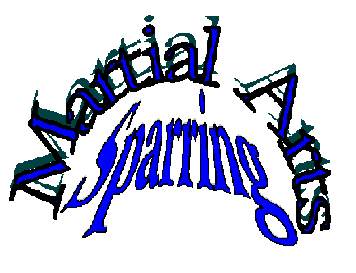
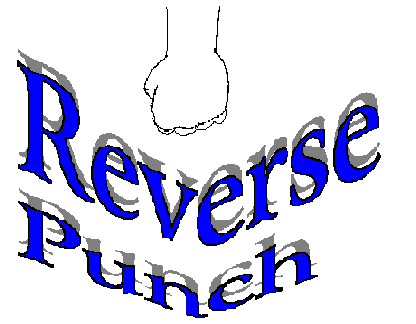
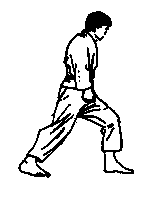
Click one of the above to check out my other pages..
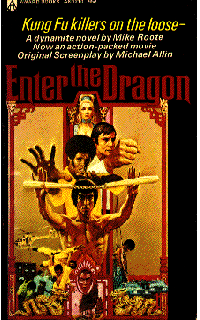
This page has been visited times since 30 July97.This page was last modified on 16 July 2002.